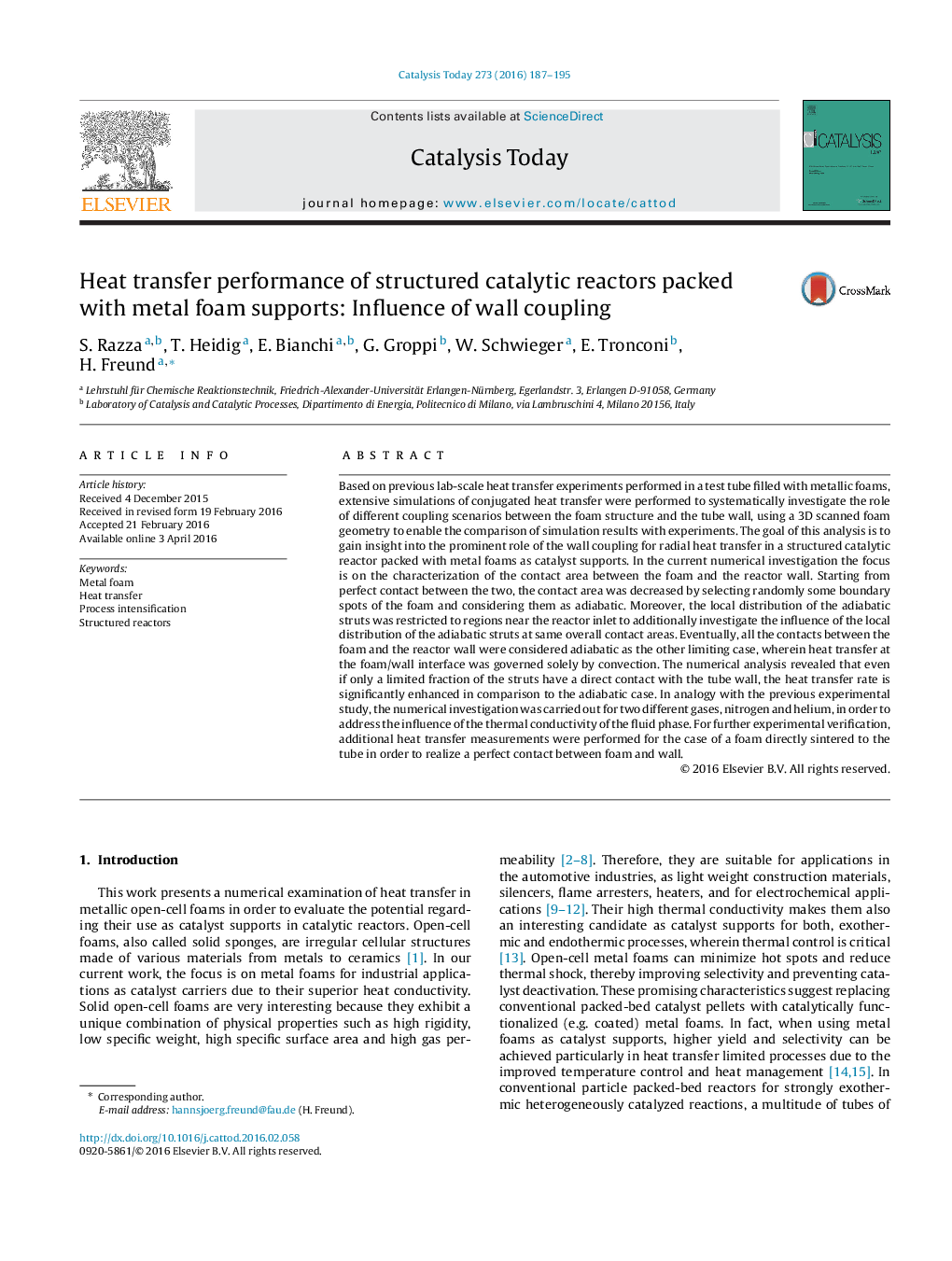| کد مقاله | کد نشریه | سال انتشار | مقاله انگلیسی | نسخه تمام متن |
|---|---|---|---|---|
| 53237 | 46955 | 2016 | 9 صفحه PDF | دانلود رایگان |
• Conjugated heat transfer in a metal open-cell foam packed reactor is investigated.
• Detailed simulations reveal strong influence of local structure on heat transfer.
• The effect of coupling at the interface of foam and tube wall is addressed.
• A small fraction of contact area significantly improves the overall heat transfer.
• Comparison with data from lab-scale experiments confirms the simulation findings.
Based on previous lab-scale heat transfer experiments performed in a test tube filled with metallic foams, extensive simulations of conjugated heat transfer were performed to systematically investigate the role of different coupling scenarios between the foam structure and the tube wall, using a 3D scanned foam geometry to enable the comparison of simulation results with experiments. The goal of this analysis is to gain insight into the prominent role of the wall coupling for radial heat transfer in a structured catalytic reactor packed with metal foams as catalyst supports. In the current numerical investigation the focus is on the characterization of the contact area between the foam and the reactor wall. Starting from perfect contact between the two, the contact area was decreased by selecting randomly some boundary spots of the foam and considering them as adiabatic. Moreover, the local distribution of the adiabatic struts was restricted to regions near the reactor inlet to additionally investigate the influence of the local distribution of the adiabatic struts at same overall contact areas. Eventually, all the contacts between the foam and the reactor wall were considered adiabatic as the other limiting case, wherein heat transfer at the foam/wall interface was governed solely by convection. The numerical analysis revealed that even if only a limited fraction of the struts have a direct contact with the tube wall, the heat transfer rate is significantly enhanced in comparison to the adiabatic case. In analogy with the previous experimental study, the numerical investigation was carried out for two different gases, nitrogen and helium, in order to address the influence of the thermal conductivity of the fluid phase. For further experimental verification, additional heat transfer measurements were performed for the case of a foam directly sintered to the tube in order to realize a perfect contact between foam and wall.
Figure optionsDownload high-quality image (362 K)Download as PowerPoint slide
Journal: Catalysis Today - Volume 273, 15 September 2016, Pages 187–195
